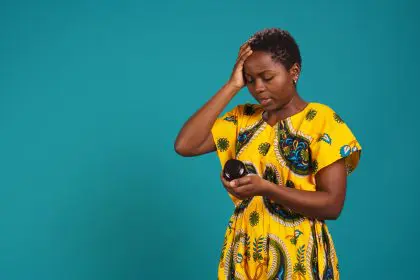When Dr. Samuel A. Akinyeye began studying unusual stool changes, he uncovered fascinating connections between everyday habits and digestive health. His research reveals how common foods and medications can create alarming changes that often have simple explanations.
Beyond the obvious signs
Medical professionals emphasize that understanding stool changes involves more than just noting color differences. Dr. Ashkan Farhadi explains that texture, consistency, and accompanying symptoms provide crucial clues about underlying causes.
The iron connection
One of the most fascinating discoveries involves iron supplements – a common addition to many Americans’ daily routines. Unlike more obvious digestive changes, iron-related color shifts often include subtle greenish tints that many people overlook.
Nature’s color creators
The relationship between food and digestive appearance reveals intriguing patterns. Deeply colored foods like beets, blueberries, and dark leafy greens contain natural compounds that transform during digestion, creating dramatic but harmless color changes.
Understanding medication effects
Common stomach remedies, particularly those containing bismuth, create unexpected chemical reactions in the digestive system. These reactions, while striking in appearance, typically resolve naturally once medication use ends.
The crucial warning signs
Medical professionals identify specific characteristics that differentiate concerning changes from harmless variations. Dr. Akinyeye notes that texture and odor changes, particularly when combined with fatigue or weakness, warrant prompt medical attention.
Inside the digestive process
The journey of food through the digestive system involves complex chemical processes that affect appearance and consistency. Understanding these natural processes helps distinguish normal variations from potential problems.
The role of bile
Bile, produced by the liver, plays a crucial role in creating normal stool appearance. Changes in bile production or flow can signal various underlying conditions that medical professionals monitor closely.
Timing matters
The speed at which food moves through the digestive system affects its final appearance. Medical professionals often consider transit time when evaluating digestive health concerns.
Understanding absorption
Nutrient absorption throughout the digestive tract influences stool characteristics. Changes in absorption patterns can provide valuable clues about digestive health.
The gut microbiome connection
Recent research reveals fascinating links between gut bacteria and stool characteristics. These microscopic organisms influence everything from color to consistency.
Dietary influences
Beyond obviously colored foods, various dietary components affect digestive appearance. Understanding these connections helps people make informed choices about their eating habits.
Hydration’s impact
Proper hydration plays a crucial role in maintaining healthy digestion. Medical professionals emphasize how water intake affects stool consistency and appearance.
Exercise and movement
Physical activity influences digestive health in surprising ways. Regular movement helps maintain healthy digestive function and regular bowel habits.
Stress and digestion
The connection between stress and digestive changes fascinates medical researchers. Understanding this relationship helps explain various digestive variations.
Age-related changes
Different life stages bring natural variations in digestive patterns. Medical professionals help people understand what to expect as they age.
Environmental factors
External factors, including travel and schedule changes, can influence digestive patterns. Understanding these influences helps people maintain digestive wellness.
The role of fiber
Dietary fiber affects both digestion speed and stool characteristics. Medical professionals often recommend specific fiber intake adjustments based on individual needs.
Medication interactions
Various medications can create unexpected digestive changes. Understanding these effects helps prevent unnecessary concern while identifying genuine warning signs.
When to seek help
Medical professionals provide clear guidelines about when digestive changes warrant professional evaluation. Their expertise helps people distinguish between normal variations and concerning symptoms.
Looking ahead
Ongoing research continues revealing new connections between lifestyle factors and digestive health. These discoveries help medical professionals provide increasingly precise recommendations for maintaining digestive wellness.
The complex relationship between daily habits and digestive health continues fascinating medical professionals. As research reveals more about these connections, people gain better tools for understanding their bodies and maintaining optimal health.
Understanding digestive changes requires considering multiple factors, from diet and medications to underlying health conditions. By staying informed about these relationships, people can better manage their digestive health while recognizing when to seek professional guidance.

















